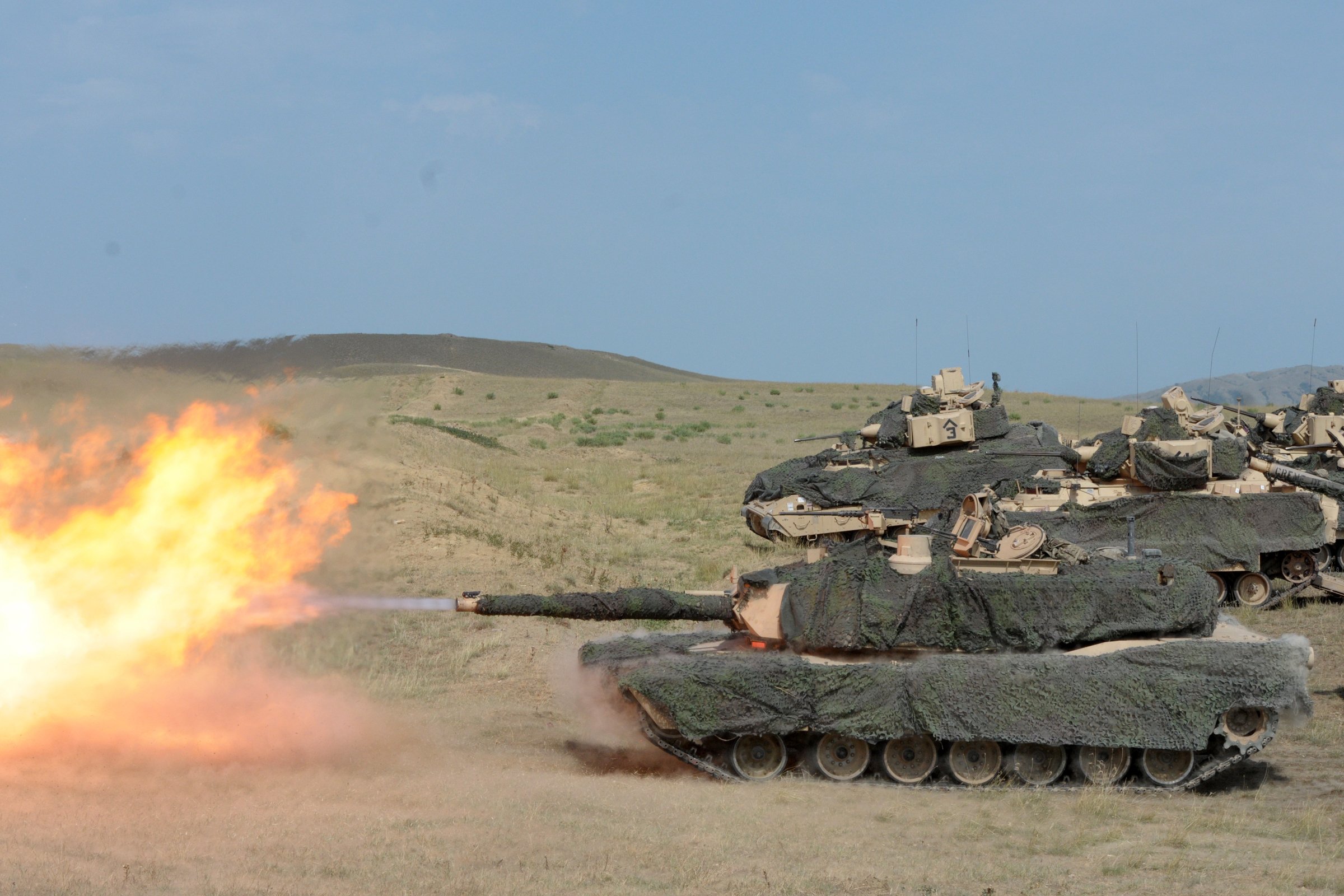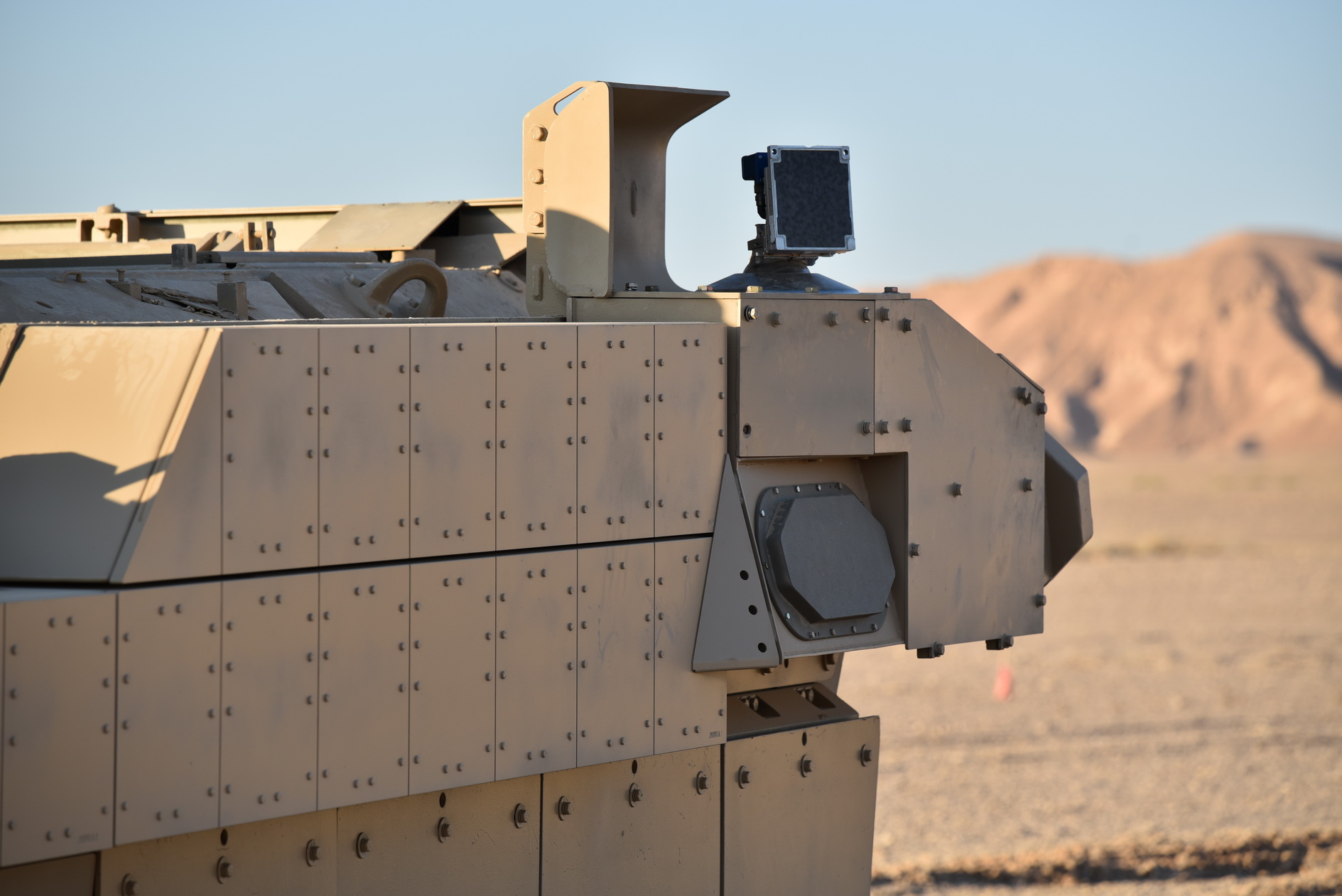The US Army’s Abrams main battle tanks, Bradley Infantry Fighting Vehicles, and Stryker combat vehicles could be sitting ducks for enemy drone attacks.
The Tactical Air and Land Forces Subcommittee of the House Armed Services Committee (HASC) recently enquired the US military about its plans of the service to deploy Vehicle Protection Systems (VPS) that could keep tank crews safe from drones. The panel is currently debating the defense authorization bill for the fiscal year 2022.
“The committee has consistently supported the Army’s efforts to identify, develop, integrate and test various active and passive vehicle protection systems (VPS) that would increase armored vehicle survivability and protect crew and passengers,” the subcommittee wrote in its report.
“[But] the committee is unclear, however, as to VPS research or development efforts related to potential threats from [UAS],” it added, expressing concern over the existing efforts of the US military on how effective the protection systems are against drone threats.

US lawmakers have recommended the active protection systems (APS) for the armored vehicle fleets since they insulate against anti-tank rockets, missiles as well as drones.
The Army has been struggling for years to install active protection systems onto its Abrams tanks, Bradley Infantry Fighting Vehicles, and Stryker combat vehicles.
Drone Threat Against Tanks
In the last decade, drones have become a major threat to military troops and the weapon arsenal. These unmanned aerial vehicles have impacted military outcomes in conflicts like the Nagorno-Karabakh in which Turkish drones aided the Azerbaijan side to victory against rival Armenia.
Popular Mechanics reported how drones have been actively used in Ukraine, Libya, Iraq, and Syria to drop primitive explosive payloads or launch ‘Kamikaze’ (suicide) attacks in the past few years.
Over the weekend, a major disruption to conventional warfare. Russian base in #Syria attacked using DIY drones, hand made IEDs attached. Billion $ security systems failed to detect them, had to orchestrate blackout at base, shoot at drones with hand guns. pic.twitter.com/HGytpdgScY
— Kabir Taneja (@KabirTaneja) January 8, 2018
In 2017, a drone attack on a Ukrainian ammunition dump destroyed an estimated $1 billion in munitions. In the same year, an ISIS drone dropped a small explosive device on an unsuspecting Iraqi Army tank, killing the commander as he stood exposed outside of his hatch.
A UN report even accused Turkey of developing autonomous drones which do not require human interference before killing a target, an allegation the drone maker later rejected, saying the UAVs are not autonomous but are controlled by crews.
Protection Against Drones
In 2016, the US chose the Trophy Active Protection System (APS) developed by Israeli company Rafael for the Abrams tanks. Similarly, the Iron Fist system from another Israeli company called IMI was chosen for the Bradley and Herdon system, a Virginia-based Artis’ Iron Curtain for Stryker tanks.
While the US has been successful in fielding the interim Trophy APS system on the Abrams tanks, it has struggled to integrate the Bradley and Stryker tanks with chosen protection systems.

Later in 2018, the procurement of the Herdon system was canceled for Stryker tanks, and instead, two additional systems were shortlisted, called Rafael’s Trophy VPS and Rheinmetall’s Active Defense System.
A year later, Col. Glenn Dean, the program manager for Stryker, who also manages the service’s effort to install APS on combat vehicles revealed that the US Army had not yet found a system that was suitable for the platform.
“Both Rheinmetall and the medium-weight Trophy, both have maturity challenges, but the bottom line is that they turned out to not be a suitable fit for Stryker,” Dean told Defense News.
Looking at the emerging threats such as drones and laser weapons, experts suggest that perhaps the ideal Army defense might be a “microwave weapon” that can take down several drones at once.
One such system is the Army’s laser warning program that is tied to the Modular Active Protection System (MAPS) program. The MAPS is a system under development with the Army featuring a common controller into which hard-kill and soft-kill protection can be plugged.
US aerospace giant Lockheed Martin was also awarded a $30 million contract earlier this year for integrating and formally testing its open-architecture processor designed to control the US Army’s future combat vehicle protection system.
The company will be developing base kits for US Modular Active Protection System (MAPS) program, which then will be customized with sensors and countermeasures for different vehicles by 2023.
“Under the 36-month contract, Lockheed Martin will deliver five production-ready base kits with an option for up to 20, and support Army integration and testing on Abrams, Armored Multi-Purpose Vehicle, Bradley and Stryker vehicles,” the company’s press release said.
“The contract also covers developing base kit support for vehicle protection capabilities beyond active protection, such as underbelly blast protection,” it added.
In addition, the US government had released $16 million in FY21 to conduct testing of the Iron Fist Light Decoupled phase 2 system on a Bradley.
The committee’s discussion concluded with the panel directing the Army’s acquisition chief to brief the House Armed Services Committee no later than Jan. 28, 2022, on “plans related to VPS against UAS threats”, along with what the efforts might cost, from research through procurement, across a five-year program budget cycle.




